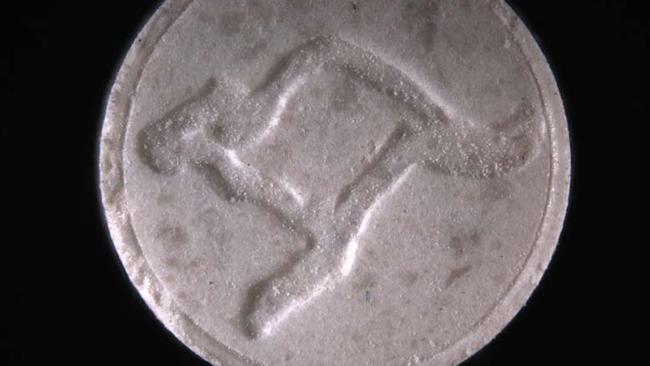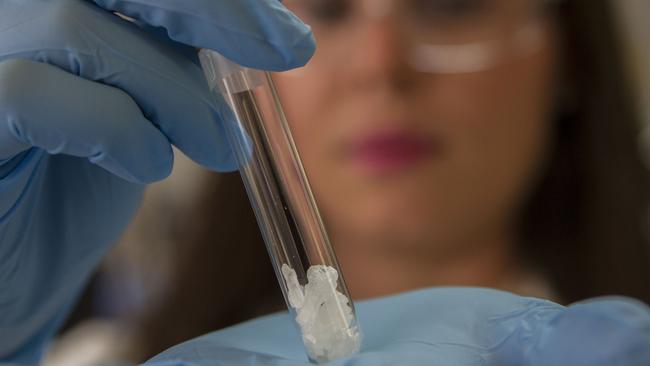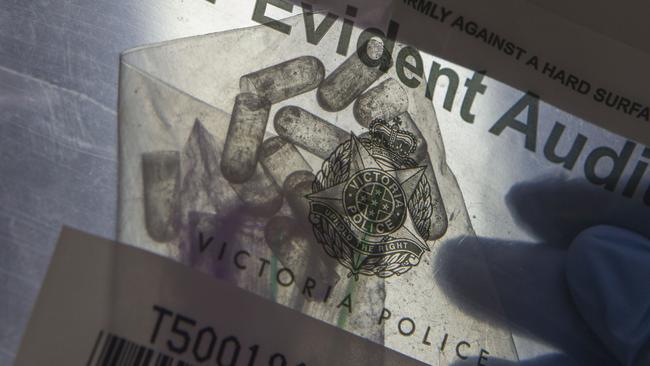Police fear ‘super strength’ ecstasy could lead to more deaths
POLICE fear there will be more ecstasy deaths due to new “super strength” crystal capsules increasingly hitting the Australian market.

Law & Order
Don't miss out on the headlines from Law & Order. Followed categories will be added to My News.
- Overseas gangs ride high on Australia’s drugs wave
- Partying patrons at Revolver seem oblivious to drug dangers
- How a Google search foiled Aussie tomato tin mafia’s drug plots
- Drug deaths linked to toxic ecstasy batch in Melbourne
- One dead, one critical from toxic batch of drugs
POLICE fear there will be more ecstasy deaths due to new “super strength” crystal capsules increasingly hitting the Australian market.
The purity level of ecstasy tablets sold in Victoria has varied from between zero MDMA presence to between 30 and 40 per cent in recent years.
But the crystal ecstasy capsules now flooding the state’s clubs and pubs are usually at least 80 per cent pure MDMA.
The latest police figures reveal a crystal ecstasy capsule sells for about $25 in Victoria.
MDMA is the main chemical component of ecstasy and is a powerful stimulant drug which can cause hallucinations, fitting, irrational behaviour, paranoia, racing heartbeat, dehydration, heat stroke and death through kidney and other organ failure.
Those taking the almost pure crystal ecstasy — which is nicknamed Molly — often have no idea the capsules are much more toxic and dangerous than the weaker pills they have popped in the past.
Police don’t yet know if three recent ecstasy deaths in Melbourne were caused by overdosing on these super strength crystal ecstasy capsules, but say they certainly could have been.
Scientists at the Victoria Police forensic services department are still analysing a sample from the batch of ecstasy responsible for killing three users and putting 20 others in hospital earlier this month.

The department’s assistant director, Cate Quinn, yesterday said it would be several days before testing of the deadly batch of ecstasy was completed.
“We are seeing examples of unusual designer type substances in ecstasy samples which have the potential to be lethal,” she told the Herald Sun.
“High quality MDMA also carries its own fatal risks.
“Ecstasy tablets are usually in the range of 30 to 40 per cent purity range.
“But the crystal ecstasy that we are seeing is more like in the 80 per cent range.
“So that’s a significant change in the dosage that somebody might get and purity obviously affects the outcome for the individual.
“What we are seeing with the crystal ecstasy is that it’s generally a clear capsule and you can actually see the crystal material in the capsule.”
Ms Quinn said it was possible some ecstasy tablets on sale in Melbourne were also as high in MDMA as the crystal capsules, but she hasn’t seen any evidence of that yet.
“The quality is so random. You can have two tablets of the same colour and the same logo that are completely different in the effect they have,” she said.
National Drug and Alcohol Research Centre senior researcher Amanda Roxburgh yesterday said crystal ecstasy was much easier to accidentally overdose on.
“With the crystal form it becomes more difficult to know or consistently predict how much you are actually taking because of the variation in the shape, size and density of the crystal,” she said.
Victoria Police assistant commissioner Rick Nugent finds it difficult to imagine why anybody would put an ecstasy pill in their mouth when they have no way of knowing what is in it.
“They are made by criminals who don’t care about people’s health and wellbeing,” he said.
“Quite often the criminals didn’t even pass year ten and here they are working in laboratories.
“They struggle from time to time with access to different ingredients.

“So they substitute those dangerous ingredients with other harmful ingredients like battery acid or rat poison, or whatever else they can mix in, depending on what they can get at a particular time.”
Mr Nugent said the force was particularly concerned about the increasing use of super strong crystal ecstasy capsules of 80 per cent purity in Victoria because they are so highly addictive.
————————————————————————————————————————
THE Victoria Police forensic services department provided the Herald Sun with breakdowns of the contents of four pills recently sold in Melbourne as ecstasy. The two tablets and the two capsules looked the same on the outside, but were very different inside.
Tablet 1. MDMA (46 per cent) mixture of binding agents (54 per cent).
Tablet 2. Caffeine (68 per cent) methorphan (8 per cent) BZP (6 per cent) MDMA (5 per cent) TFMPP (5 per cent) methylamphetamine (1 per cent) DPZB (1 per cent) phenylpiperazine (1 per cent) mixture of fillers, binding material and cutting agents (5 per cent).
Crystal ecstasy capsule 1. MDMA (80 per cent) mixture of ethylone, phenethylamine and various binding agents (20 per cent).
Crystal ecstasy capsule 2. MDMA (65 per cent) methylamphetamine (15 per cent) mixture of MDP2P and various binding agents (20 per cent).
METHORPHAN is a cough suppressant which can cause blurred vision, confusion, dizziness, hallucinations and severe irritability.
BZP, TFMPP and DPZB crudely mimic the effects of MDMA (ecstasy) by increasing dopamine, serotonin and norepinephrine levels in users.
METHYLAMPHETAMINE is a strong central nervous system stimulant.
PHENYLPIPERAZINE is an antidepressant.
ETHYLONE and phenethylamine are both synthetic stimulants.
MDP2P is a precursor chemical used in the production of MDMA.
Other drugs often found in tablets sold as ecstasy include:
KETAMINE, a horse tranquilliser which can be deadly to humans.
PARAMETHOXYAMPHETAMINE (PMA), a stimulant with hallucinogenic properties. More toxic, but less euphoric than MDMA. Can be deadly due to users taking additional pills in mistaken believe first didn’t work — as PMA takes longer to act.
METHYLONE, a powerful euphoric stimulant originally developed for legitimate use as an antidepressant.
NBOMe, has the nickname N-Bomb and is one of the new and deadly breed of synthetic drugs with incredibly potent hallucinogenic qualities. Australian backpacker Rye Hunt died last year after allegedly taking NBOMe in a Rio de Janeiro club in the mistaken belief it was ecstasy. He suffered a psychotic episode and his body was later found washed ashore on a beach.
The Australian Department of Health recently warned the new psychoactive substances created to mimic the effects of MDMA, such as BZP, TFMPP, NBOMe, ethylone and phenethylamine, haven’t been around long enough for them to know what the risks of overdose or major health problems are.
What is known is that the purpose of most of the synthetic drugs used to mimic the euphoric effects of MDMA increase serotonin levels in users, which can cause a life-threatening condition called serotonin syndrome. It occurs when the brain is overloaded with serotonin, which is responsible for making us happy.
